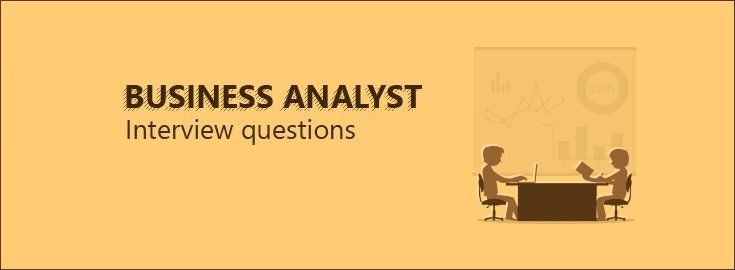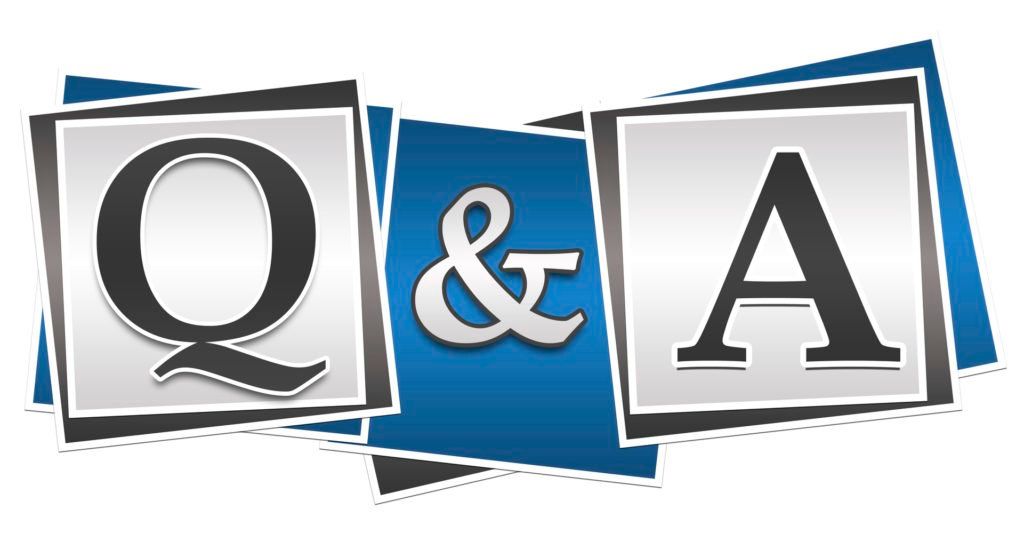Top 30 Questions Asked In Business Analyst Interview

A business analyst’s core role is to understand a company’s operations and goals and make suggestions for improvement. While the specific responsibilities and mission for business analyst positions vary from one company to another, there are several questions that you’re likely to be asked in any business analyst interview.
Your dream job as a business analyst is within reach, but preparing for your big interview can be stressful and time-consuming. While selecting a business analyst candidate, employers are looking to assess your analytical problem-solving skills as well as your communication and collaboration skills.
Business analysts must also be creative thinkers, so expect to tackle a few unusual brainteasers that are designed to see how well you can think through a complex problem.
These questions include a combination of behavioural interview questions along with inquiries relating to business analyst terms and questions that test your skills as a business analyst.
During your interview preparation, take a careful look at the job posting. Analyze the criterion the company mentions seeking in an employee. Do your best to match your skills and experiences to the specifications listed so that you can present yourself as a highly qualified candidate for the position. It can be helpful to review key business analyst skills the company will be looking for and come up with examples of how you have used them in practice.
We have compiled the most relevant Business Analyst interview questions asked in top organizations to help you clear your Business Analyst interview. Also, if you are an employer our list will surely help you prepare a great set of questionnaires to be asked.

Let’s start with a few of the most asked Business Analyst interview questions List:
Ques 1. Who is a Business Analyst?
A business analyst is someone who analyzes an organization or business domain and documents its business or processes or systems, assessing the business model or its integration with technology.
Business Analysts conduct market analyses, analyzing product lines and the overall profitability of a business. Also, they develop and monitor data quality metrics and ensure business data and reporting needs are met.
A Business Analyst is a person who analyses an organization, designs processes, and systems assess the business models so that they can be integrated with technology.
Business analysts are the agents of change, who introduce, manage, and facilitate all the necessary changes to the business model.
They also serve as a communication channel between the sponsors, stakeholders, and the project team.
Ques 2. What are the most essential skill-set required to be a successful Business Analyst?
Business Analyst interview questions and answers mostly talk about the skills of a Business Analyst. Business Analyst skills can be broadly categorized into three types:
Technical Skills
- Technology
- Research
- Data Review/ Statistical Analysis
- Financial Planning
- Documentation
Personal Skills
- Problem-Solving Ability
- Decision-Making Skills
- Managerial Skills
- Communication Skills
- Negotiation Skills
Ques 3. What is the role of a Business Analyst in a project?
The business analyst takes the ultimate responsibility to identify and solve problems affecting the business solution and works closely with the project manager to analyze the existing business systems and make recommendations for improvement.
Ques 4. Which documents does a Business Analyst handle?
Presenting a list of all the documents that a Business Analyst handles:-
- Project vision document
- Use cases
- Requirement Management Plan
- User manual
- Requirement traceability matrix(RTM)
- Business Requirement Document
- System Requirement Specification(SRS)
- Test case document
- Functional Requirement Specification (FRS)
They can also range from Change control documents to even some documents like Mapping documents. Knowing about the requirement of these documents at the perfect time may be the need of the hour during an interview.
Ques 5. What are the core competencies of a Business Analysts
- Logical thinking & Decision making
- Domain & Industry Knowledge
- Business process management
- Technical & Soft skills
- Problem-solving skills/Analytic decision-making ability
Ques 6. Why a Business Analyst should be involved in testing?
A Business Analyst has a versatile role and therefore he has to get involved in each phase. This is the reason why this Business Analyst interview questions and the answer is asked every time. Business Analysts should be involved in testing because he knows the overall system requirements and difficulties related to it very well. Hence, he can be involved during the testing phase to run it correctly and resolve any system-related query.
The Business Analyst may also serve as the user for usability testing, to help ensure the system does what a user would expect. For regression testing, the Business Analyst may provide sample output to compare against the new output.
Ques 7. What do you mean by a feasibility study?
The feasibility study is to recognize the possibility (success rate) of the planned idea for a business query. It helps to determine new chances and focus on the project.
An analysis and evaluation of a proposed project is feasibility and it is to be determined on the following factors:
- If it is technically feasible.
- Is feasible within the estimated cost
- Is it profitable?
Ques 8. How does a business analyst make sure that all the requirements are gathered?
A business Analyst ensures all the requirements are gathered only when –
- It is authenticated and agreed upon by the business users
- The requirements are properly associated with the project’s business requirements.
- The requirements can be executed with the existing resources.
- All the significant business stakeholders are aligned with the prompted requirements
Ques 9. How does a Business Analyst perform risk management?
A risk is defined as an indeterminate event that is responsible for a threat to the existing business which can cause an impact on the profits of the business.
Business Analysts recognize, analyze, assess, and control the risk in the business. Business Analysts can use Risk management techniques such as
- Risk avoidance
- Reduction
- Transfer
- Acceptance
Ques 10. What is INVEST in Business Analysis?
INVEST stands for –
- Independent
- Negotiable
- Valuable
- Estimable
- Sized Appropriately
- Testable
Ques 11. What is Business Model Analysis?
Business Model Analysis is done to analyze whether a business is feasible and valued regarding social, economic, and other perceptions. The business model analysis provides the basis for any essential business model change and modernization for an organization.
Ques 12. Why a Business Analyst is needed for a project?
The role of a business analyst in project management is crucial to addressing the expectations and reconciling the fears of all other stakeholders involved in the process. The project would be at risk of failure if no professional had been appointed to the business analysis role. Then the stakeholders’ needs would be narrowed down to routine and so the project would never deliver results that could solve the existing business problem.
The role is defined by two high-level activities, as follows:
- Problem Identification- A business Analyst explores the existing environment to identify the gaps that impede the business to reach the desired results.
- Problem-Solving- A business Analyst develops an action plan to solve the problem and exploit open improvement opportunities.
Ques 13. What are the problem-solving skills of a Business Analyst?
A Business Analyst is a multi-tasker, who is assigned the role to solve the queries arising during a project. Problem-solving skills are usually asked in Business Analyst interviews questions and answers.
A few of the important skills are listed below-
- Leadership skill
- Excellent communication skill
- Problem analysis skill
- Technical knowledge
- Domain knowledge
Ques 14. Which types of issues a Business Analyst may face?
A Business Analyst may face the following issues –
- Employees related issues
- Technical problems
- Lack of access
- Limitations in Business Policies
- Business model errors
Ques 15. Elaborate on the key strengths of a business analyst.
The core Skills of a Business Analyst are a good grip on system engineering concepts, leadership qualities, technical knowledge, writing, and verbal communication.
5 qualities every great business analyst should have:
- Excellent verbal and written communication skills
- Ability To Solve Problems
- Critical Thinking
- An Analytical Mind
- Process Modeling Knowledge.
Ques 16. What is a requirement?
A requirement is a targeted solution to achieve specific business goals or objectives. It is an input to various stages of SDLC. This is the basis of a project which must be validated by the stakeholders and business users before implementation. Besides that, every requirement needs to be properly documented for future reference purposes.
Ques 17. What is business validation?
Business validation is the process when you required the validation of actual verification of the client’s requirements. This must be as per the required and eligible signed-off agreement.
Ques 18. Describe your role as a Business Analyst in an organization.
The business Analyst role varies from organization to organization, project to project, and even from domain to domain. The main role of a Business Analyst is to find out the needs of an organization, find out their problems, even predict future issues to an extent and suggest suitable solutions for the same and drive through the organization’s achievements.
Also, we can say that Business Analyst in a project can play the role of a Business Planner, System Analyst, Data Analyst, Organization Analyst, Application Designer, Subject Area Expert, Technical Architect, etc.
Ques 19. How changes in requirements are handled?
When the changes to the requirements are accepted then as a Business Analyst:
- Firstly, the changes made to the requirements are noted down and prioritized.
- Also, go through those changes and find out their impact of them on the project.
- Calculate the cost, timeline, and resources required to cover the impact of change requirements on the project.
- Make sure whether those changes affect or create gaps in functional design documents, testing, or coding.
Ques 20. How do you monitor performance and success?
A professional business analyst will have a strong set of key performance indicators (KPIs), that they will monitor to understand the position, growth, progress, and success of a product or project.
Look for an action plan that would include a common-sense root cause analysis and some creative thinking to solve an unexpected KPI performance.
Ques 21. How do you gather and analyze data to produce business insights?
Identifying business insights can help teams more effectively understand the challenges that they may be facing and come up with even better solutions to overcome them.
A business analyst will employ various tools and techniques to obtain these business insights:
- Conducting interviews with clients, stakeholders, and end-users
- Conducting surveys about product usage or market needs
- Consulting with industry experts
- Performing qualitative analysis with existing data
- Creating A/B tests, MVPs, prototypes, pilots, and trial projects
- Reading up on the latest industry news and trends
- Analyzing competitor solutions
Ques 22. What are the common tools used by a business Analyst?
The common and basic tools that may be used by any business analyst could be many and a few of them are listed here:
- MS Visio
- MS word
- MS Excel
- MS PowerPoint
- MS Quality center
- MS test director
- MS Project
- ERP systems
These tools may be the tools that are client-specific and also some which may be supplied by the client.
Ques 23. What are the steps that you need to follow to design a use case?
The steps in designing use cases are:
- Identify the users of the system
- Creating a user profile for each category of users. This includes all roles that the users may play and are relevant to the system.
- Identify essential goals associated with each role. Also, identifying significant roles.
- Creating use cases for every goal associated with a use case template. This also includes maintaining the same abstraction level for the entire use case. Higher-level use case steps are considered goals for the lower level.
- Structuring the use cases
- Reviewing and validating the users
Ques 24. What is Scope creep and how can you avoid scope creep?
Scope creep (requirement creep) is a term that relates to uncontrolled changes or deviations in the project’s scope within the same resource range within the same schedule and budget of the project.
It’s an indication of poor project management and a viable risk to a project. Some of the possible causes of scope creep are:
- Poor communication between the project’s stakeholders
- Improper documentation of the project’s requirements
Scope creep could be avoided by:
- Clear documentation about the project scope
- Following proper change management
- Prior intimation about the effects of the changes on the associated parties
- Proper documentation of the new requirements in the project log
- Refrain from Gold Plating which means adding extra features to the existing functionalities
Ques 25. Define the Pareto Analysis.
Pareto Analysis which is also known as the 80/20 rule is an administrative technique. It is a useful technique for bug resolution and quality control. According to this rule, 20 % of causes can generate 80 % of effects in a system, therefore it is named as 80/20 rule.
Ques 26. How can you say that a requirement is perfect?
The standards of a good requirement can be pointed out using a rule called the SMART rule.
Specific – The description of a requirement should be perfect and specific enough to understand it.
Measurable – There are various parameters through which the requirement’s success can be measured.
Attainable – Resources should be able to achieve success with the requirement.
Relevant – States what results are realistically achieved.
Timely – Requirements of a project should be revealed in time.
Ques 27. Differentiate a Risk and an issue.
Risk is nothing but a problem or something that can be predicted earlier so that some improvement plans are used to handle them.
Whereas an ‘Issue’ means the risk that had happened or occurred. So, it cannot be predicted in advance.
The role of a Business Analyst is not to solve the issue instead should suggest some plans to control the loss/damage caused. And this should be marked as a precautionary measure for other projects as well.
Ques 28. What is a misuse case?
An activity performed by a user that in turn causes system failure is termed malicious activity. As it is misguiding the system function flow, it is termed a misuse case.
Ques 29. How can you handle and manage difficult stakeholders?
Dealing with and handling difficult stakeholders is a major task for any Business Analyst. Listing here a few of the ways to sort them out:
- Identify the difficult stakeholders among the group and listen and concentrate on their point of view with patience. Be polite to them and do not close off the conversation immediately with such people.
- Generally, a stakeholder appears difficult because they are not comfortable with a few things in the project. So listen to them and diplomatically answer such difficult stakeholders.
- Find out a way to meet them personally and have a one-on-one discussion. By this, you can show your commitment to them.
- Try to find out and resolve their motivations like whether are they worried about the budget of the project or curious about the project whether it is turning exactly as per their vision etc.
- Continuously engage such difficult stakeholders and make them understand that their contribution is much valued and required for the project.
Ques 30. When can a Business Analyst say that the requirements are done?
Requirements are considered complete when they satisfy the below criteria:
- Requirements should be aligned with the objectives of a business. It means that the views of business stakeholders should align with the needs to be built for the project.
- All the possible views and ideas of key stakeholders are to be extracted.
- The quality of the requirements should meet/satisfy the organization’s set of criteria through which the quality of the requirements is tested.
- One can say that the requirements are complete when they could be done within the possible available resources.
- All the stakeholders of the project should be in consent to the gathered requirements.
FAQ's
Q1. Why do people choose the business analyst profession?
Ans- Every day a business analyst is faced with new challenges and new problems to solve, which makes it a perfect job for someone that values a dynamic and challenging work environment, and allows one to continuously develop their problem-solving and critical thinking skills.
Q2. What is the scope of a business analyst?
Ans- Business Analysts can directly move into functional roles in organizations; they can progress into roles like – Project Manager Information Technology, Project Manager, Software or Assistant General Manager.
Q3. What is the role of a business analyst?
Ans- Business analysts identify business areas that can be improved to increase efficiency and strengthen business processes. They often work closely with others throughout the business hierarchy to communicate their findings and help implement changes.
